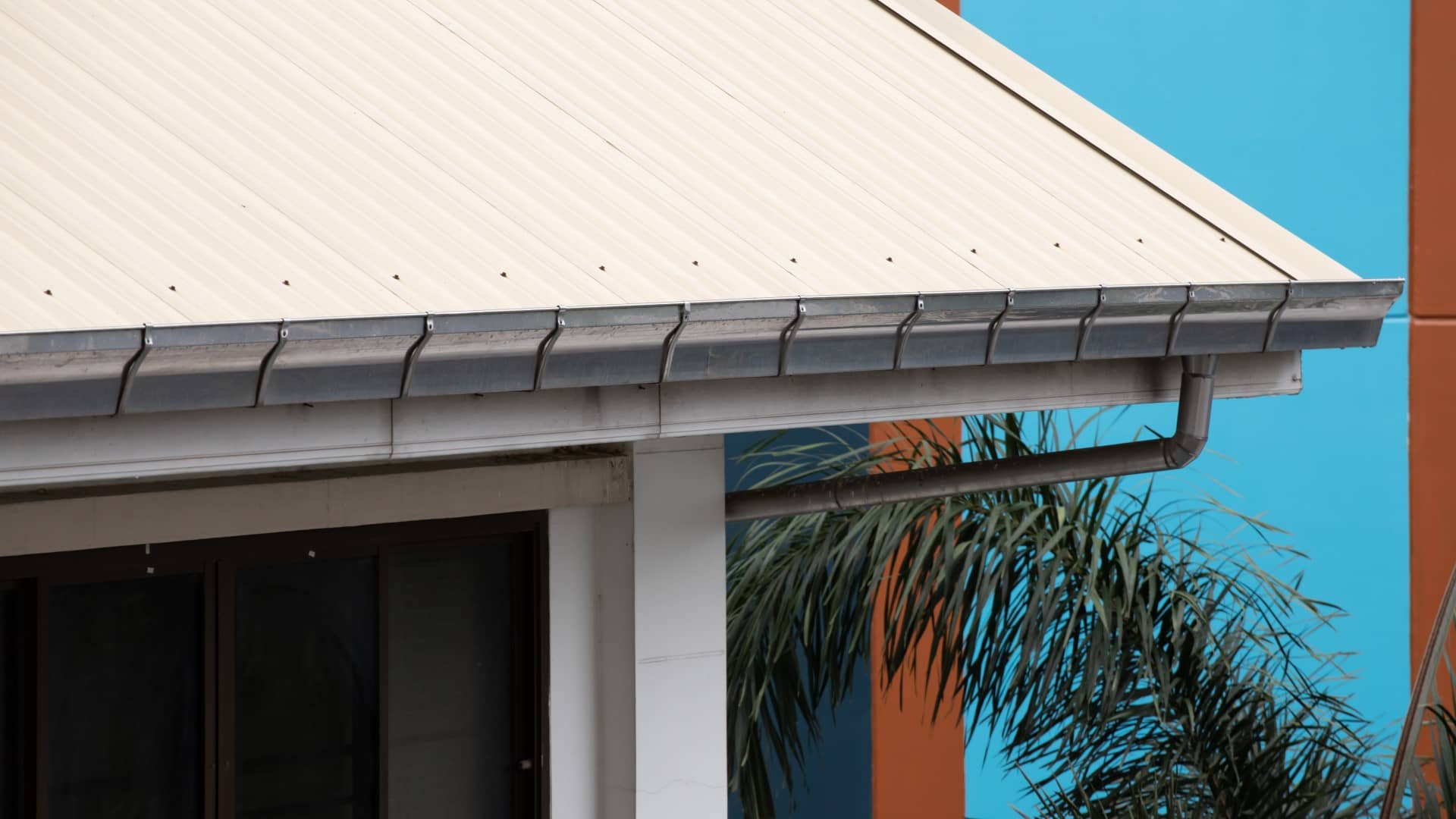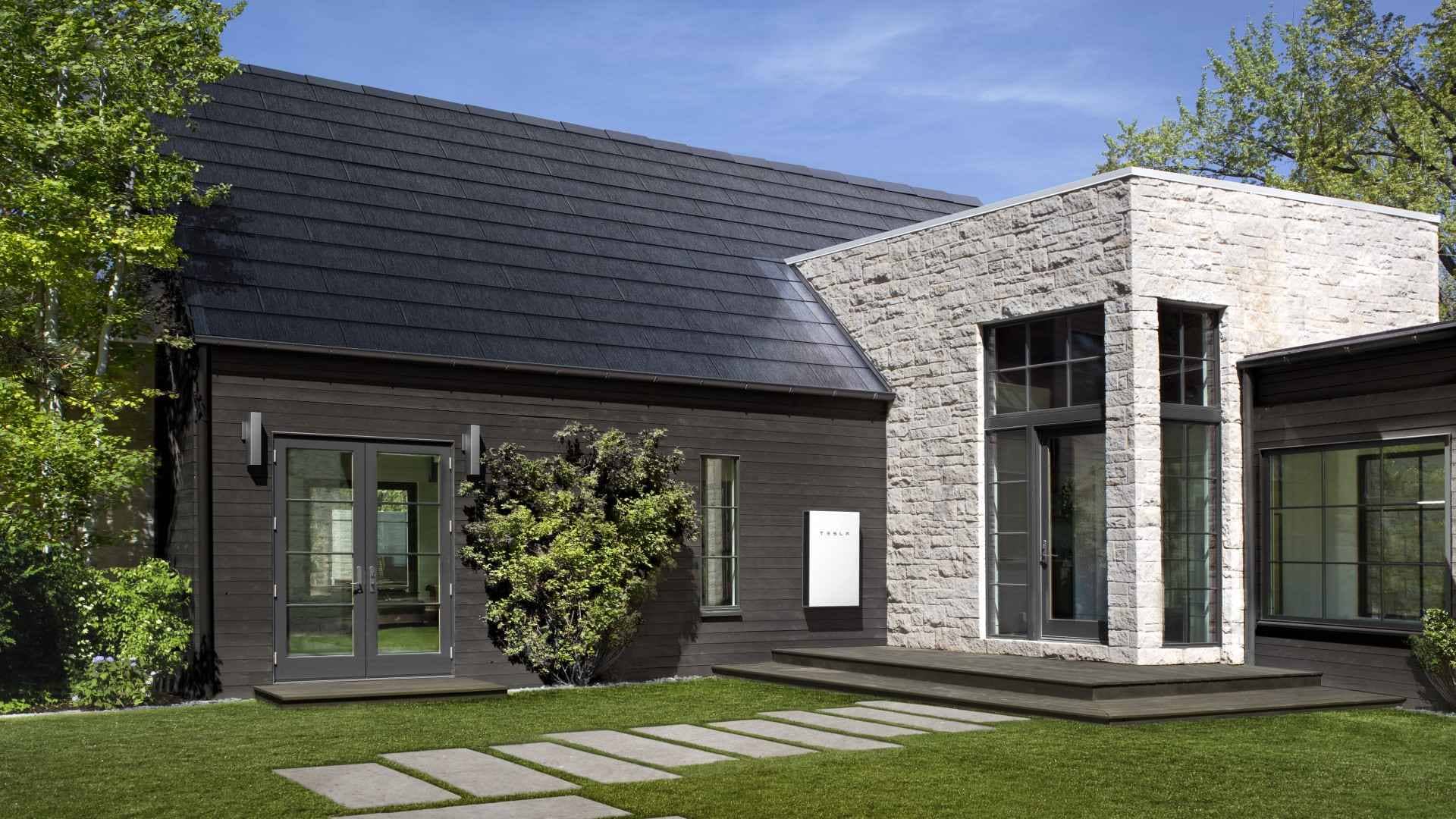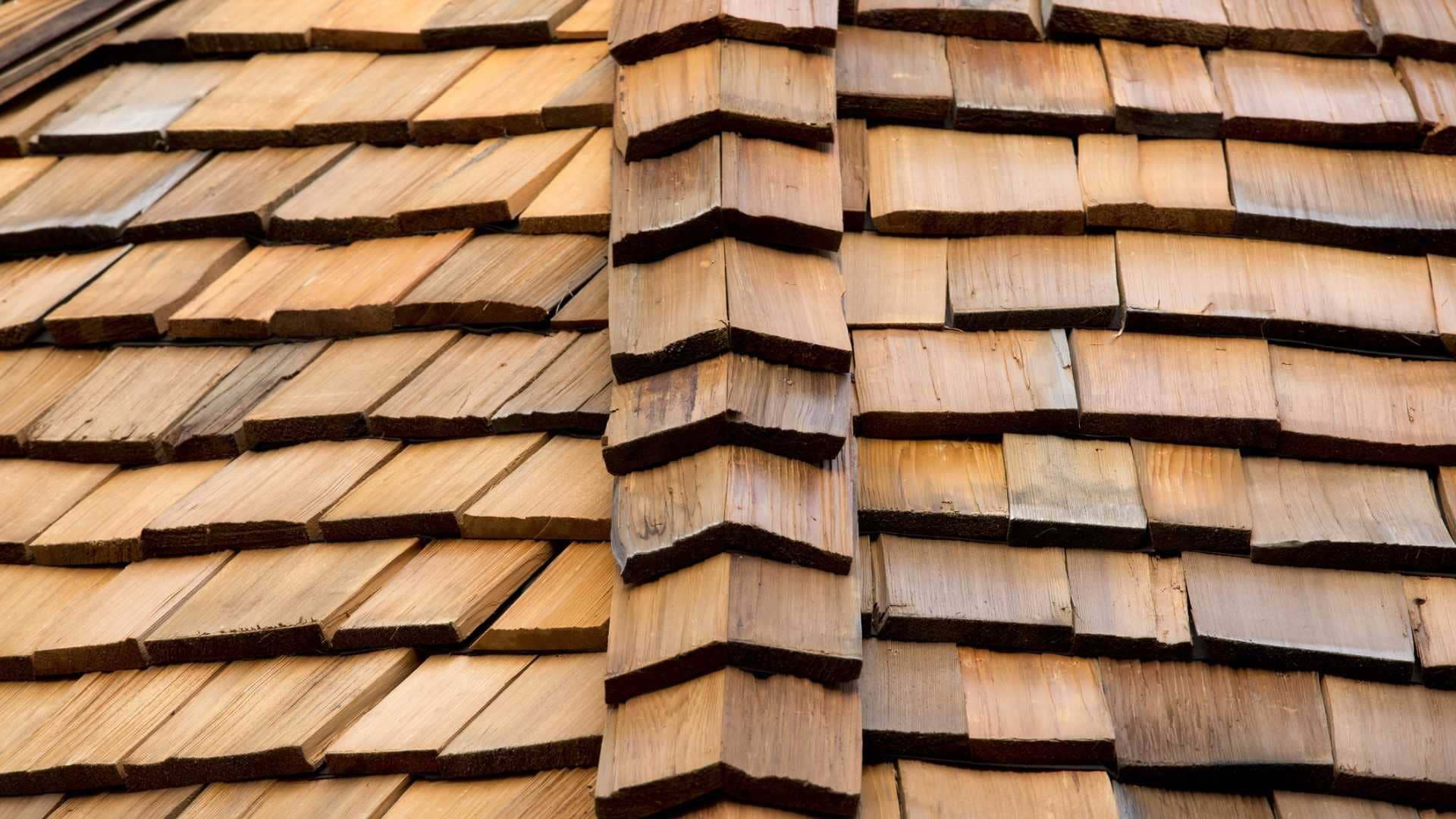Asphalt Shingle Roofing Cost Calculator
The average Cost of a new asphalt roof is: across America. Use Instant Roofer’s asphalt shingle roofing cost calculator to estimate your asphalt roofing project.
- Quick, Easy, Reliable – Know your roof replacement costs in seconds
- Instant Roof Measurements – Powered by advanced AI technology
- Accurate Cost Estimates – Tailored to your exact roof size and material choice
- Compare Contractors Easily – See up to 3 top-rated local pros
- No Signup Required – Get your estimates hassle-free
- Trusted by Homeowners – Backed by real reviews and transparent pricing
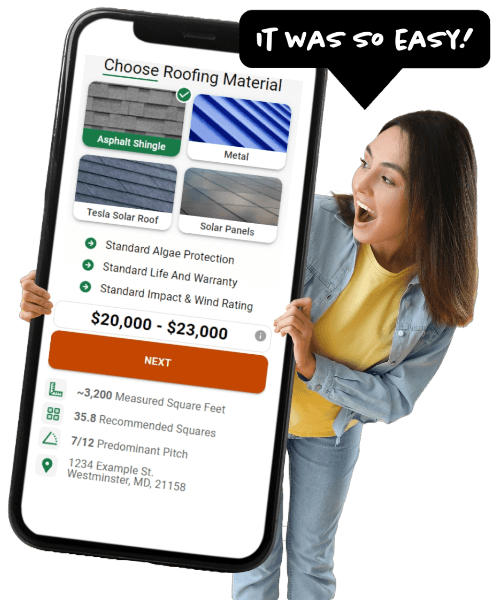
Measure
Roofs measured by our roofing calculator in the United States
Estimate
Average roof replacement cost for an asphalt roof in the USA
Connect
Highly rated roofers nationwide
How much does asphalt shingle roofing cost?
An asphalt roof replacement costs between $5,000 – $25,000 on average as of 2025 according to our asphalt shingle roofing cost calculator, with the overall average nationwide being as of . Roof replacement costs are significantly influenced by the various options available for asphalt roofing materials, as well as factors such as home size, roof slope, regional labor prices, and other considerations outlined below.
When it comes to asphalt roofing, the materials tend to be fairly similar. Many companies offer unique features for their asphalt shingles, such as mold protection, hail resistance, wind resistance, and sustainability, as well as various styles and colors. These manufacturers typically provide different tiers of asphalt shingles, which mainly focus on their resistance to various weather elements.
When you find a roofer, be sure your quote accounts for everything and ask questions relevant to your specific circumstances. For instance, if you reside in a windy region, verify that the asphalt shingles are specifically designed to withstand high winds or is the disposal of the old roof is included in the quote itself. When using our asphalt roofing calculator, we collect your information precisely and send your information as qualified roofing leads directly to highly qualified professionals in your area.
Another item you may want to ask about is the lifespan of the asphalt tile. Are you planning on selling your house in less than 10 years? Maybe you don’t need the top of the line asphalt shingle. Asphalt or not, our roof replacement cost calculator or our roofing calculator can give you the closest estimate on the market for your local area.
Pros and Cons of an Asphalt Roof
Asphalt is a wonderful material that has many benefits for homeowners across the nation. It’s one of the cheapest options, it’s durable, and lower maintenance than some other materials you could choose. After checking your cost estimation on our asphalt shingle roofing cost calculator, let’s look at a summary of the pros and cons of choosing asphalt as your material.
Pros of an Asphalt Roof
Affordability: Asphalt shingles are cost-effective, making them a popular choice for budget-conscious homeowners.
Variety of Styles and Colors: Asphalt shingles come in a wide range of styles and colors, allowing for diverse aesthetic options to suit different architectural styles.
Low Maintenance: They require minimal maintenance, and damaged or missing shingles can be easily replaced.
Ease of Installation: Roofers find asphalt shingles relatively easy to install, which can contribute to lower labor costs.
Durability: Asphalt shingles are durable and can withstand various weather conditions, including rain, snow, and moderate wind.
Widespread Availability: Asphalt shingles are readily available, making them a convenient choice for quick roof replacements or repairs.
Cons of an Asphalt Roof
Limited Lifespan: Asphalt shingles have a shorter lifespan compared to some other roofing materials, typically lasting 20 to 25 years.
Vulnerability to Weathering: Intense weather conditions, such as hail or severe storms, can cause damage to asphalt shingles over time.
Environmental Impact: The production and disposal of asphalt shingles contribute to environmental concerns, as they are not easily recyclable.
Susceptibility to Algae and Moss Growth: Asphalt shingles can be prone to algae and moss growth, particularly in humid climates, impacting the roof’s aesthetics.
Color Fading: Over time, the color of asphalt shingles can fade due to exposure to sunlight and other environmental factors.
Not Suitable for Steep Roofs: Asphalt shingles may not be the best choice for roofs with a steep pitch, as they can be more prone to wind-driven rain and may not provide optimal coverage. Check your home with our roof pitch calculator!
While asphalt roofs have their advantages, it’s essential to weigh these against the drawbacks based on your specific needs, budget, and the climate of your location. Our asphalt shingle roofing cost calculator can show you the range cost so you understand your next investment more fully. Regular maintenance and timely repairs can help maximize the lifespan of an asphalt roof. If you are considering an alternate material, check out our cedar shake roof cost calculator, metal roof cost calculator or our brand-new solar roof calculator and solar panel cost calculator.
Asphalt Roof Material Types and Their Prices
There are three main types of asphalt shingles commonly used in residential roofing:
- 3-Tab Shingles
- Architectural Shingles
- Designer Shingles (Premium Shingles)
| Material | Low Cost | High Cost |
|---|---|---|
| 3-Tab Shingles | $6,100 | $8,100 |
| Architectural Shingles | 9,000 | $11,000 |
| Designer Shingles | $14,000 | $18,000 |
| Based on a 2,000 sqft home in November, 2023 | ||
The Difference Between 3-Tab, Architectural, and Designer Shingles
The main differences between these three popular asphalt roofing options lie in appearance, cost, and durability and are reflected in the range provided by our asphalt shingle roofing cost calculator. 3-Tab shingles are basic and cost-effective, architectural shingles offer a balance between aesthetics and affordability, and designer shingles provide a premium, luxurious option with enhanced durability and customization. The choice depends on your budget, aesthetic preferences, and the level of protection you desire for your roof.
If you’re wanting to opt for the more expensive shingles, head over to our roof financing calculator to see if budgeting your investment would work over time.
3-Tab Shingles
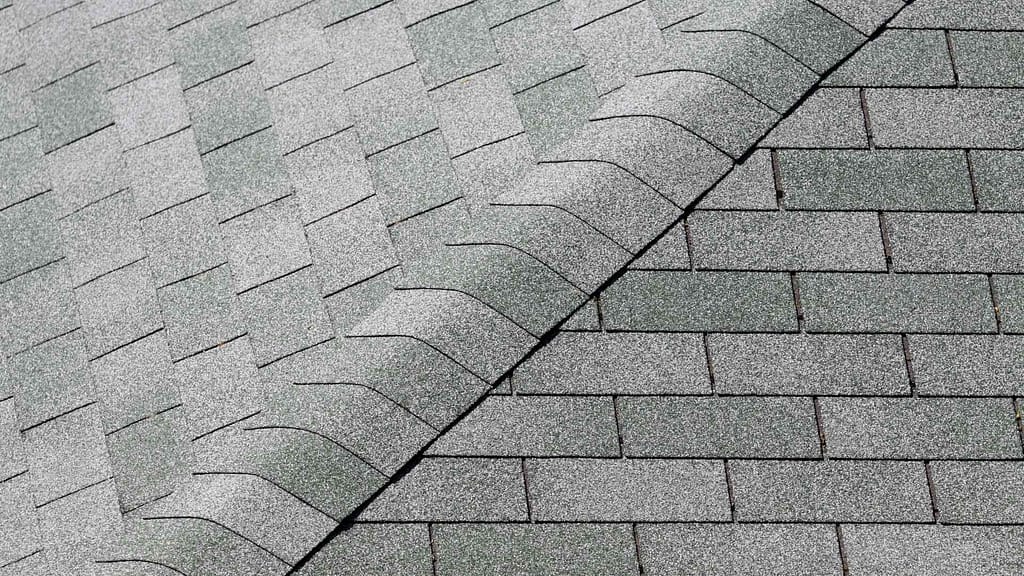
Appearance: 3-Tab shingles have a simple, flat design with three tabs per shingle, creating a uniform, repetitive pattern
Cost: These shingles are the most budget-friendly option, making them popular for cost-conscious homeowners.
Durability: While durable, 3-Tab shingles generally have a shorter lifespan compared to architectural and designer shingles.
Installation: They are relatively easy to install, contributing to lower labor costs.
Architectural Shingles
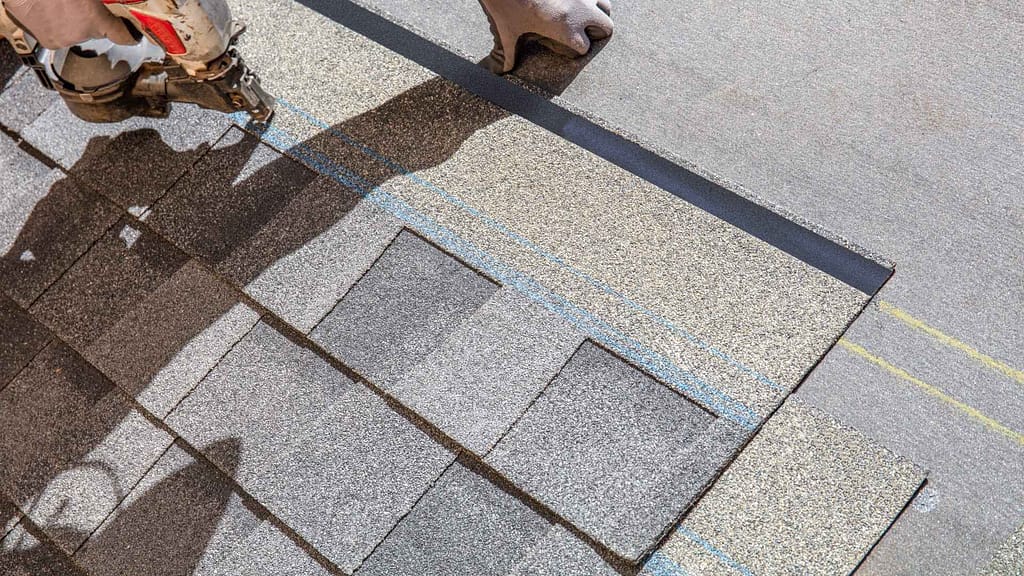
Appearance: Architectural shingles have a dimensional and textured look, often mimicking the appearance of natural materials. They come in various shapes and sizes, creating a sophisticated visual appeal.
Cost: More expensive than 3-Tab shingles, but still more affordable than designer shingles. The increased cost is justified by enhanced aesthetics and durability.
Durability: Architectural shingles are thicker and more durable than 3-Tab shingles, offering better resistance to wind, impact, and harsh weather conditions.
Versatility: These shingles provide a versatile and attractive roofing option suitable for a wide range of architectural styles.
Designer Shingles

Appearance: Designer shingles are high-end roofing options with intricate designs, textures, and a more luxurious look. They often replicate the look of premium materials like cedar shakes or slate.
Cost: Designer shingles are the most expensive option due to their quality and enhanced aesthetics.
Customization: Designer shingles provide a high degree of customization, allowing homeowners to achieve a unique and upscale look for their roofs.
Warranty: Premium shingles often come with extended warranties, reflecting the manufacturer’s confidence in their performance.
Asphalt Roofing FAQ
What is an asphalt roof?
An asphalt roof refers to a roofing system that utilizes asphalt shingles as the primary roofing material. Asphalt shingles are one of the most common and popular roofing materials due to their affordability, versatility, and ease of installation. Learn more in our article, “What is an asphalt roof?”
How long does an asphalt shingle roof last?
The lifespan of an asphalt shingle roof typically ranges from 20 to 25 years. Factors influencing longevity include the quality of materials, installation, climate, and maintenance. High-quality shingles, professional installation, and regular maintenance can extend the roof’s life. However, as shingles age, they may become brittle, lose granules, and experience wear, eventually necessitating replacement. Periodic inspections by roofing professionals can help assess the roof’s condition and plan for timely replacements. Our asphalt shingle roofing cost calculator can show you the range cost of your next roof replacement if it’s time to look at a replacement.
How to clean an asphalt shingle roof?
Cleaning an asphalt shingle roof involves several steps. Start by removing debris like leaves and branches. Next, use a soft-bristled brush or leaf blower to clear away loose dirt. For stains or algae, a solution of water and mild detergent can be applied with a soft brush. Avoid pressure washing, as it can damage shingles. Regular cleaning not only enhances curb appeal but also helps prevent moss and algae growth, prolonging the roof’s life.
When to replace an asphalt shingle roof?
Several signs indicate it’s time to replace an asphalt shingle roof. These include widespread shingle damage, granule loss, persistent leaks, and age exceeding 20-25 years. If repairs become frequent and extensive, replacement may be more cost-effective. Additionally, consulting with a roofing professional after severe weather events can help assess potential damage and determine if replacement is necessary. Our asphalt shingle roofing cost calculator can help start those conversations and connect you with the right local roofers.
How to clean moss off an asphalt shingle roof?
To clean moss off an asphalt shingle roof, first, brush away loose debris. Then, mix a solution of water and oxygen bleach or a specialized roof cleaner. Apply the solution to the affected areas, allowing it to sit for the recommended time. Gently scrub the moss with a soft-bristled brush or broom. Rinse thoroughly with water. Prevent future moss growth by trimming overhanging branches and ensuring proper roof ventilation. Regular maintenance helps preserve the roof’s appearance and functionality.
How to find a leak in an asphalt shingle roof?
Locating a leak in an asphalt shingle roof involves a systematic approach. Begin by inspecting the attic for water stains or mold. During rain, use a flashlight to trace the source of the leak. Check for damaged or missing shingles, cracked flashing around chimneys or vents, and gaps in the roof. Water may also travel along rafters, making the source distant from the visible stain. If the cause remains elusive, consulting a roofing professional equipped with infrared technology can help pinpoint leaks accurately. Promptly addressing leaks is crucial to preventing further damage to the roof and interior of the home.
Does all asphalt shingle roofing require an underlayment?
Yes, the majority of asphalt shingle roofing installations require an underlayment. An underlayment is a crucial component of the roofing system that is installed beneath the shingles and directly on top of the roof decking. Its primary functions include:
- Waterproofing: The underlayment acts as an additional barrier against water infiltration, providing protection in case water penetrates the outer layer of shingles.
- Protection Against Moisture: It helps prevent moisture from reaching the roof deck, which is particularly important in regions prone to heavy rainfall, snow, or ice.
- Additional Weather Protection: The underlayment provides temporary weather protection during the roofing installation process, shielding the structure from the elements until the shingles are installed.
- Enhanced Roof Deck Protection: It adds an extra layer of protection to the roof deck, guarding against potential damage from factors like wind-driven rain.
Common types of underlayment include asphalt-saturated felt and synthetic underlayment. The choice may depend on factors such as local building codes, climate conditions, and the manufacturer’s recommendations.
Is it OK to walk on asphalt shingles?
While it isn’t illegal to walk on your shingle roof, it really is something that should be left to the professionals depending on your reasoning. Frisbee caught on the roof? As long as you’re careful, it should be okay to retrieve it. But if your asphalt roof is showing signs or wear and tear or damage, don’t risk falling through your attic or slipping on a loose tile. Call a roofing contractor to inspect your roof and you’ll be happier for it!
How far should asphalt shingles overhang?
As a general guideline, asphalt shingles typically overhang the roof edge by about 1/2 to 3/4 of an inch. This overhang, also known as the shingle overhang or drip edge, serves multiple purposes.
Firstly, it helps direct water away from the fascia, preventing it from running down the exterior walls. Secondly, it provides a finished and aesthetic look to the roof by covering the edge of the roof decking and fascia. The specific overhang distance may vary based on factors such as local building codes, climate conditions, and the style of the roofing system.
It’s essential to follow the manufacturer’s recommendations and any local building codes when determining the appropriate shingle overhang for your specific roofing project.
Other Roofing Material Types
